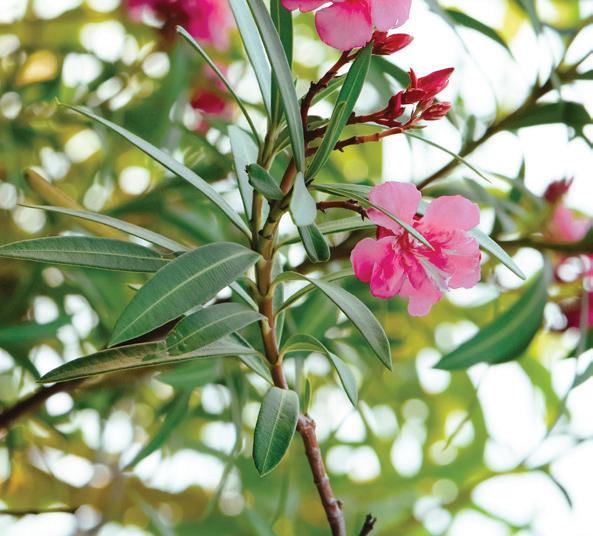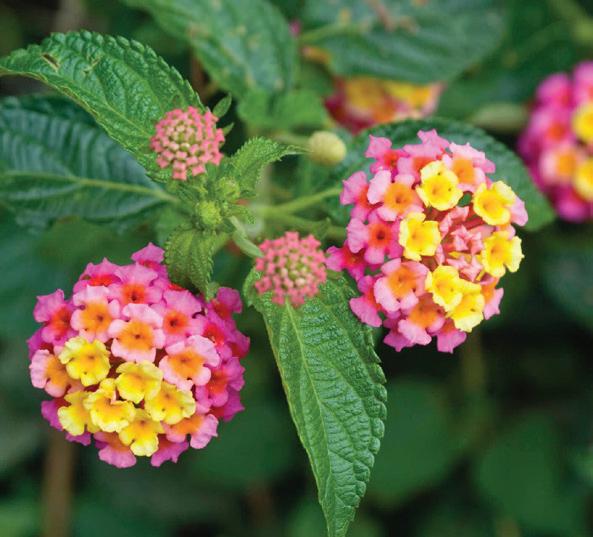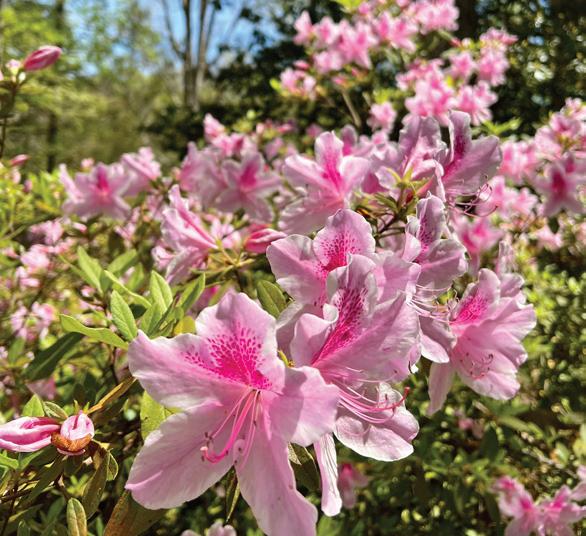
6 minute read
PAWS OFF!
Florida Plants Toxic to Pets
by Morgan Cole
Florida is known for its vibrant vegetation and lush landscapes, but not all plants in this subtropical paradise are safe for your pets. In fact, the Sunshine State is home to a variety of plants and trees that are highly toxic to pets and pose serious health risks when ingested.
Most plants are safe for dogs, but some can get curious canines into trouble. According to Dr. Patricia Williams, Veterinarian at Ferry Pass Animal Hospital, poisonous plants can affect dogs in many ways. “Depending on the plant, symptoms can range from oral irritation and gastrointestinal upset to organ failure,” Dr. Williams said.
While some plants only cause a little vomiting and diarrhea, others can have serious effects on a dog’s heart, liver, kidneys and neurological system. “If you suspect that your pet has ingested a toxic plant, you should contact your veterinarian or emergency vet clinic right away for consultation,” Dr. Williams explained. “Be sure to describe any symptoms your pet is exhibiting. Often, time is of the essence.”
If you’re not sure what type of plant your pet has ingested, Dr. Williams recommends bringing in a photo or sample of the plant to help with identification so your veterinarian can determine the best course of treatment.
Knowing which toxic plants to avoid and how to respond if your pet is exposed can help you protect your furry loved ones. Here are some of the most common culprits that might be lurking in your yard or garden.

King Sago
The most common sago palm species found in Florida is Cycas revoluta, also known as the King Sago or Japanese Sago Palm. While not a true palm, it belongs to the cycad family. The sago is an evergreen plant with stiff palm-like fronds that look like a tiny palm tree. It’s a popular choice in Florida landscapes due to its tropical appearance, tolerance to extreme heat and relatively low maintenance needs. This tiny palm tree might be stunning, but according to Dr. Williams, the sago palm is one of the most toxic plants to dogs in our area. “All parts of the plant are toxic, but especially the seeds (nuts) and female portion of the plant. Ingesting a single seed can cause death in dogs,” Dr. Williams said.
Sago seeds, which are about the size of a small walnut with a bright reddish-orange covering, are the most common cause of poisoning in dogs. “Signs from sago palm toxicosis can occur right away, but sometimes signs are not noticed until days later. Ingesting sago palm can cause vomiting and diarrhea in dogs, which can progress to liver failure and neurologic symptoms,” Dr. Williams explained.
Toxins: Cycasin, β -Methylamino-L-alanine (MBB) and an unidentified toxic compound known to cause neurologic signs.
Symptoms: Vomiting, diarrhea, gastrointestinal bleeding, abnormal bleeding and bruising, liver failure, seizures, coma and in severe cases, death.
Risk: All parts of the plant are toxic, but seeds contain the highest concentration of toxins.

Oleander
Also known as rose bay, oleander belongs to the same family as frangipani and milkweed. It’s native to the Mediterranean region, as well as India and southern China. Commonly found in Florida landscapes, oleander is a popular, heat-tolerant evergreen shrub with beautiful and often fragrant flowers in shades of pink, red or white. It grows in gardens, yards and along roadsides throughout the state. However, it's crucial to be aware that all parts of the oleander plant, including the milky latex produced by cut stems or leaves, are poisonous to both pets and humans and can cause serious illness or even death when ingested. According to the ASPCA, oleander contains cardiotoxic compounds that impact heart functions in humans, pets and even some species of wildlife.
Toxin: Cardiac glycosides
Symptoms: Drooling, severe vomiting, diarrhea, lethargy, weakness and in severe cases, irregular heart rhythms, tremors, seizures, coma or death.
Risk: All parts are poisonous, and even small amounts can be deadly.

Lantana
Lantana is a popular flowering shrub that thrives in warm climates and can be found growing in yards and gardens across Florida. The fast-growing lantana produces rounded clusters of small, brightly colored flowers in yellow, orange, white, red, pink, blue or purple. Lantana plants are considered invasive in many areas, including Florida. While the severity of lantana poisoning depends on the amount ingested and the maturity of the plant parts, all parts of the plant, including the leaves and berries, are toxic to dogs, cats and horses. Your pet’s reaction may depend on the ripeness of the berries they’ve eaten. If eaten by your dog, the unripe berries of a lantana can have severe effects. Ripe berries, on the other hand, typically only cause vomiting and diarrhea. According to the ASPCA, very large ingestions can cause coma and death.
Toxin: Triterpenoids
Symptoms: Vomiting, diarrhea, dilated pupils, difficulty walking, lethargy, coma, liver damage and in severe cases, death.
Risk: The berries are especially toxic if ingested, and ingesting large amounts can lead to death.

Azalea
You’ll find these beautiful flowering shrubs in yards across the country, especially in Florida. These dense evergreen shrubs have simple leaves with funnel-shaped clusters of flowers in a variety of vibrant colors, including white, pink, red and more. All parts of these flowering beauties are poisonous to dogs, and your pup’s reaction depends on how much they’ve eaten. According to experts at the UF IFAS extension, the plant contains a type of neurotoxin that affects the body's sodium channels, impacting both muscle and nerve function, particularly in the heart and skeletal muscles. It’s very rare for dogs to eat a lot of azaleas, but when they do, they can exhibit a variety of symptoms ranging from upset stomach to depression. According to the ASPCA, the most common symptom of azalea ingestion is stomach upset.
Toxin: Grayanotoxin
Symptoms: Weakness, vomiting, diarrhea, irregular heart rate and rhythm, depression and tremors.
Risk: All parts of the plant are toxic to dogs. Symptoms vary depending on the amount ingested.

Hydrangea
These beautiful, flower-producing shrubs have broad, flat green leaves with large bunches of flowers that bloom in a variety of colors, including pink, red, blue, purple and white. Their showy blooms and relatively low maintenance make them a popular choice in Florida landscapes. However, all parts of the hydrangea plant— including the buds, flowers, leaves and stems—can cause toxicity in dogs, cats and horses. According to the ASPCA, they contain cyanogenic glycosides, primarily in their leaves and flowers, which can release small amounts of cyanide when ingested. Cyanogenic glycosides are toxic compounds also found in almonds, apple and pear seeds, as well as the pits of cherries, peaches, apricots and plums. While most cases are mild, it's still important to be aware of the potential risks and symptoms.
Toxin: Amygdalin
Symptoms: Vomiting, diarrhea, decreased appetite, lethargy, abdominal pain and in severe cases, seizures.
Risk: All parts of the plant are toxic, but primarily the leaves and flowers.

